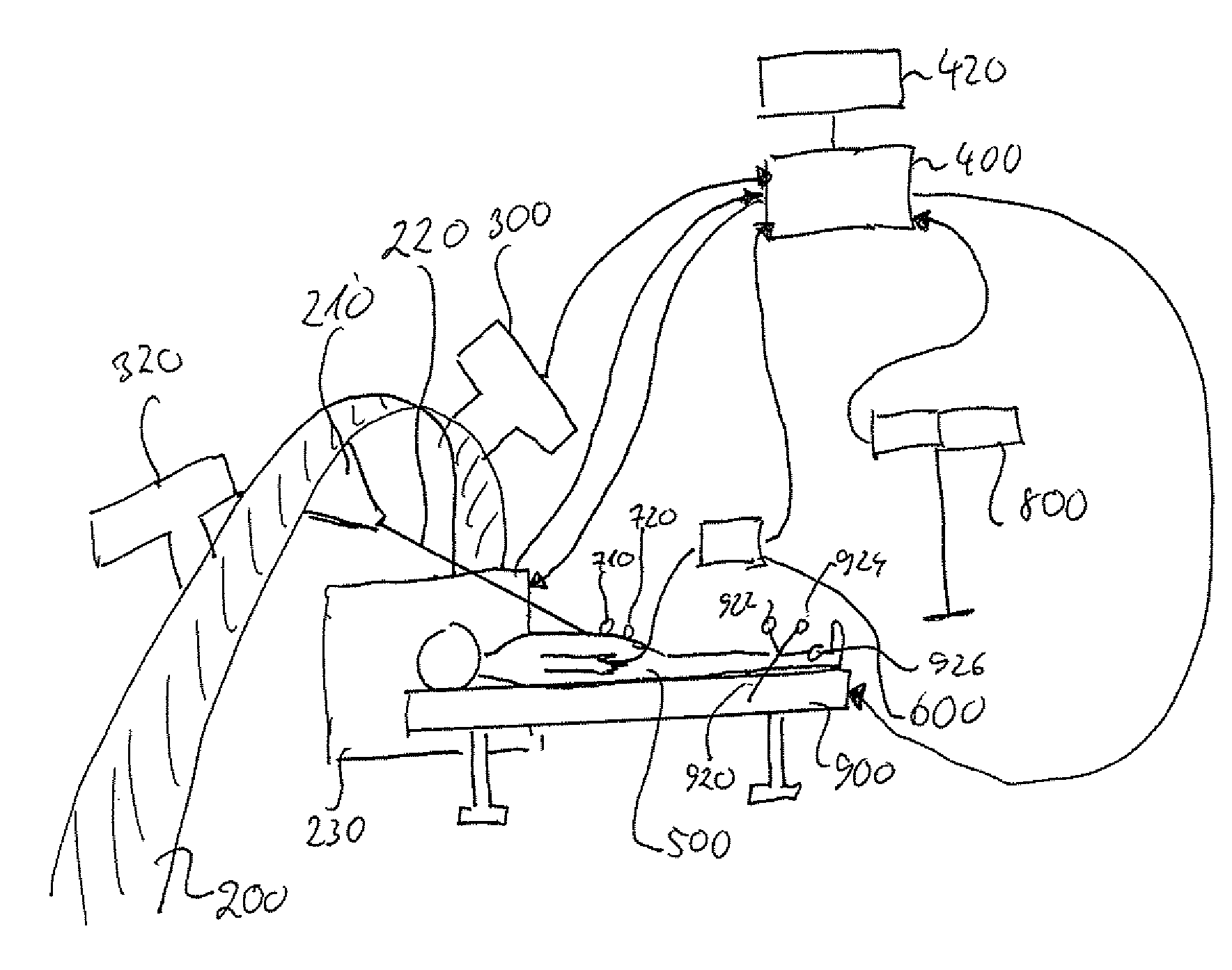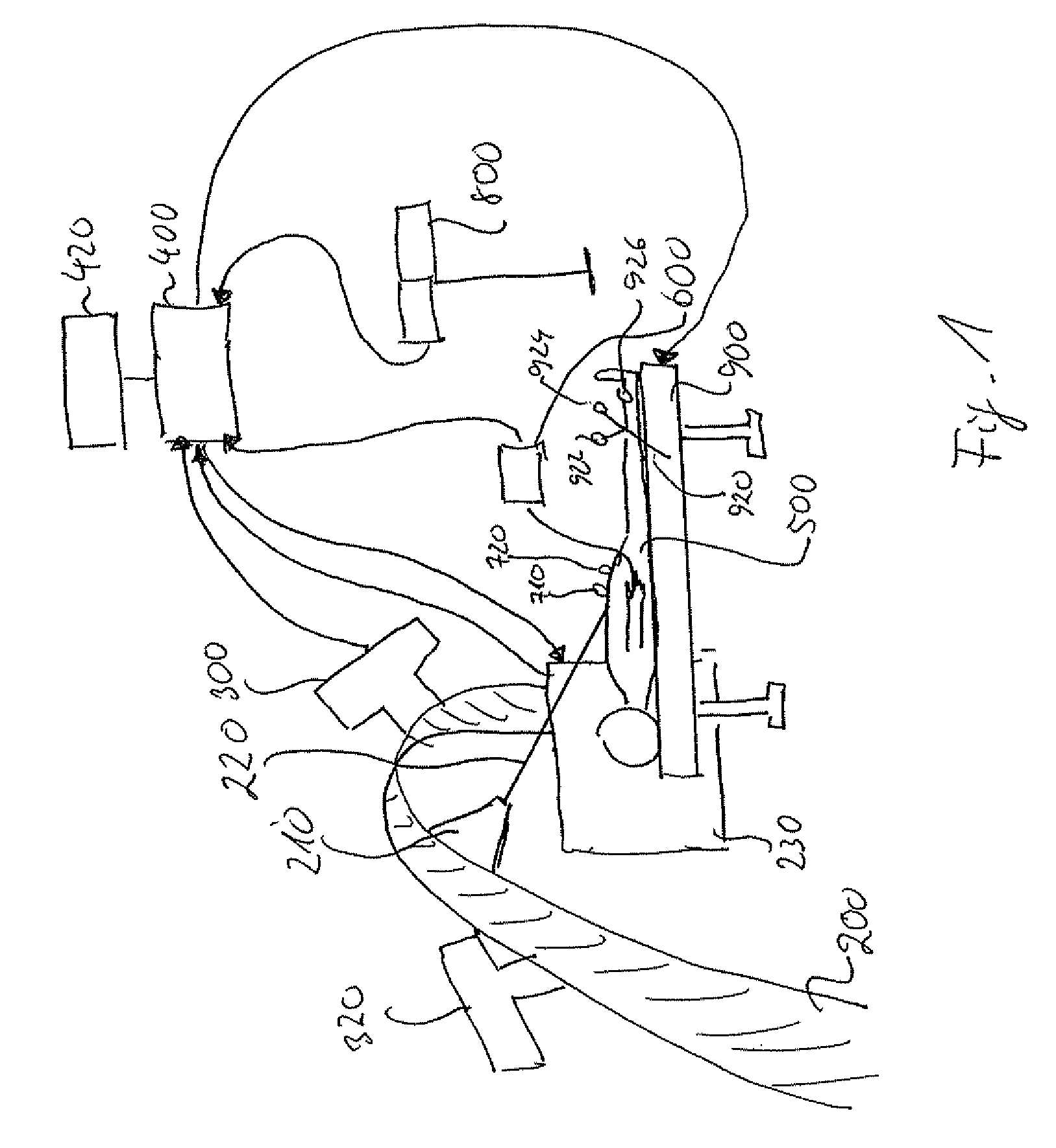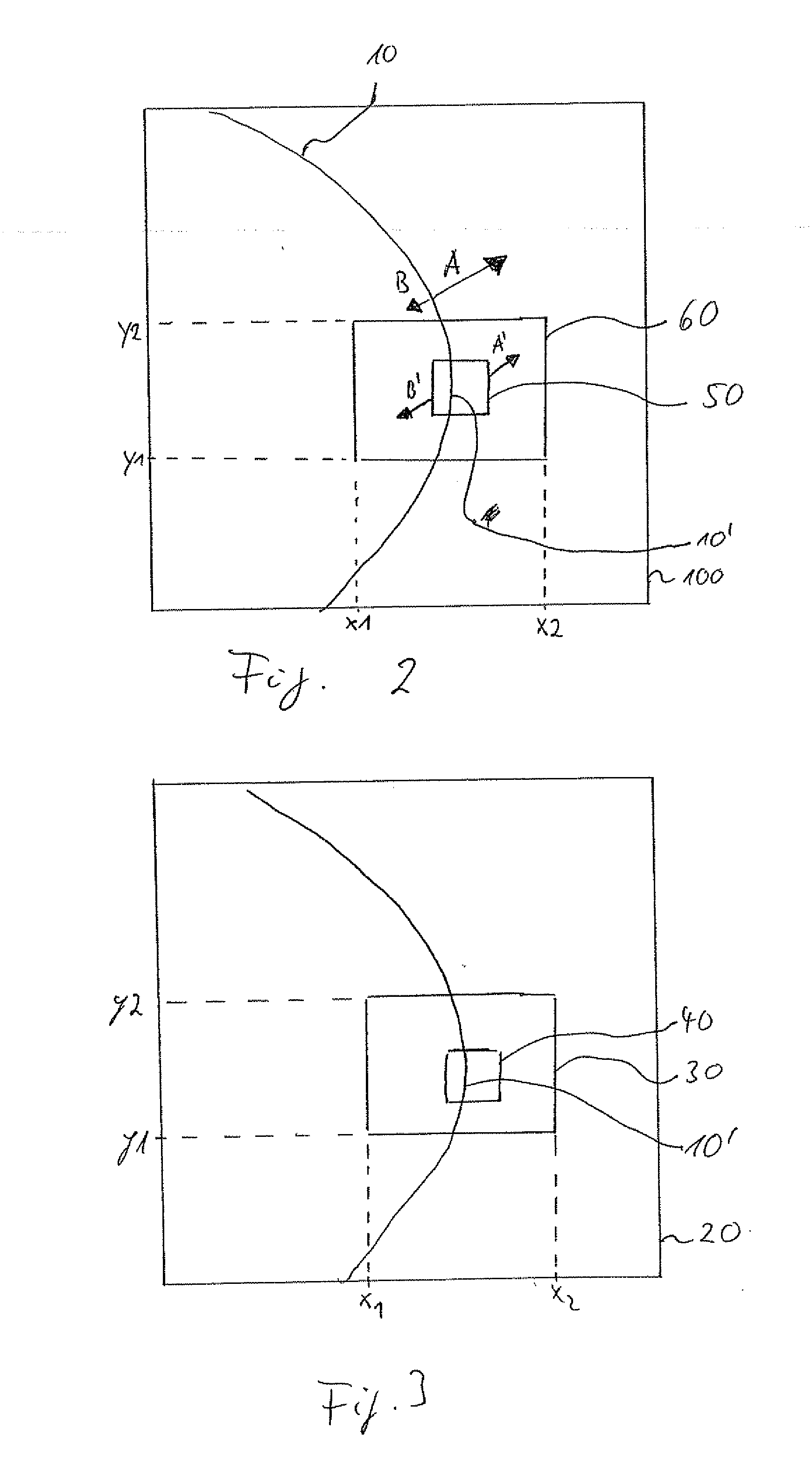Determination of regions of an analytical image that are subject to vital movement
a technology of vital movement and image, applied in image data processing, radiation therapy, sensors, etc., can solve the problems of only being able affecting the movement of parts of the body such as ribs or soft tissue, and being able to move only for a limited time, so as to facilitate detection by algorithm or doctor, facilitate detection, and facilitate identification of suitable advance regions
- Summary
- Abstract
- Description
- Claims
- Application Information
AI Technical Summary
Benefits of technology
Problems solved by technology
Method used
Image
Examples
Embodiment Construction
[0086]FIG. 1 shows a treatment beam system according to the invention. This includes a treatment device 200 having a treatment beam emission part 210 that emits a treatment beam 220. Furthermore attached to the treatment device 200, in a fixed spatial relationship therewith, is an X-ray machine 300, which represents an example of an analysis device. The X-ray machine 300 is connected to a PC 400, which has a monitor 420, in order to receive X-ray image data, which represents an example of analytical image data. As the user interface there serve for example a mouse 411 and a keyboard 410. From the computer 400, control signals furthermore go to the control device 230 of the treatment device in order to control the position of the treatment beam 220 in relation to the patient 500. The patient 500 is monitored by medical monitoring equipment such as a pulse oximeter 600, which emits pulse signals to the computer 400. Further, for example the respiratory movement of the patient 500 is m...
PUM
 Login to View More
Login to View More Abstract
Description
Claims
Application Information
 Login to View More
Login to View More - R&D
- Intellectual Property
- Life Sciences
- Materials
- Tech Scout
- Unparalleled Data Quality
- Higher Quality Content
- 60% Fewer Hallucinations
Browse by: Latest US Patents, China's latest patents, Technical Efficacy Thesaurus, Application Domain, Technology Topic, Popular Technical Reports.
© 2025 PatSnap. All rights reserved.Legal|Privacy policy|Modern Slavery Act Transparency Statement|Sitemap|About US| Contact US: help@patsnap.com



